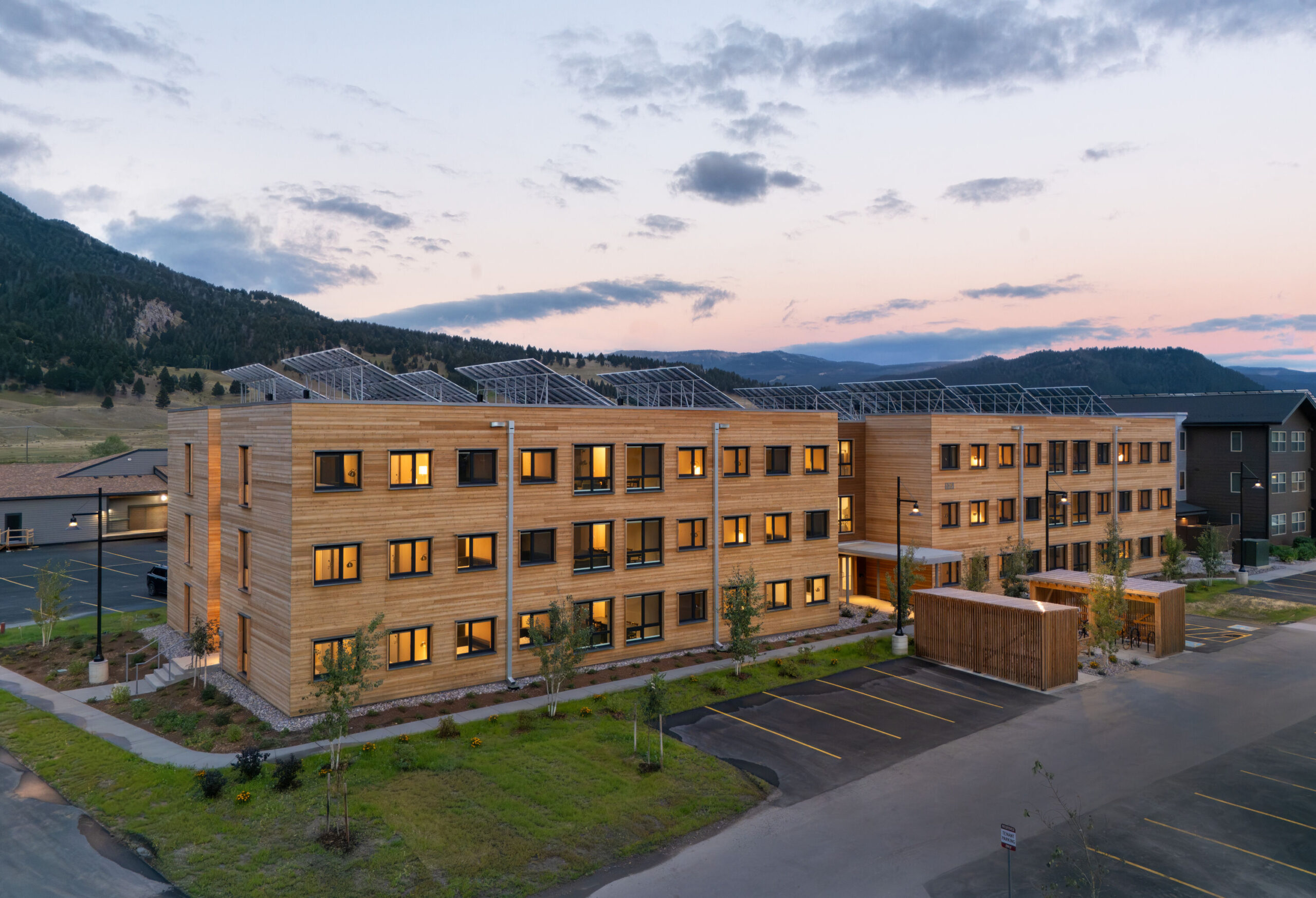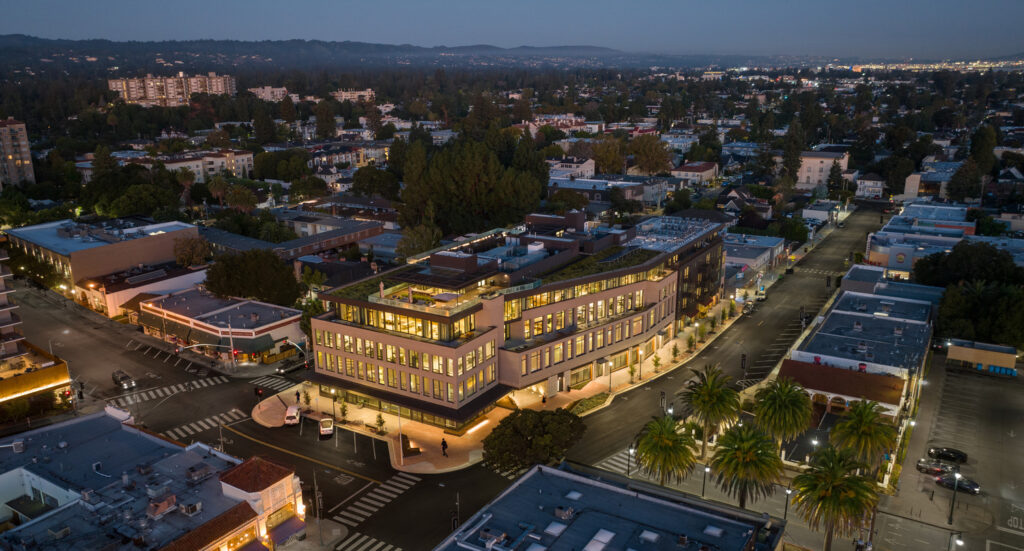Multifamily
Brooklyn Riverside
Wood: Multifamily Development Home Run
The SoBe-esque 310-unit Brooklyn Riverside apartment community has not only helped revive a neighborhood, but ably demonstrates the benefits of wood in multifamily development.

Located in Jacksonville, Florida, the three- and four-story Brooklyn Riverside apartment community demonstrates that wood is a cost-effective material of choice for multifamily construction.
In Florida’s humid coastal climate, moisture management was a key design consideration. Wood structural sheathing panels were used as an exterior applied air barrier, and breezeway entries and garage slabs were dropped 6” from adjacent finished floors and slope toward the exterior. Additionally, perimeter isolation strips were used within each unit, between the gypcrete, wall finish and baseplate.
The four- and three-story Brooklyn Riverside, which was delivered in April 2015, is marked by bold festive colors and jaunty cantilevers. The aesthetic bears an unmistakable SoBe vibe. It’s a design bet that is an “absolute home run” for the developer and the community.

Powered by Wood
“We kept the base of the building fairly simple,” observes the project’s lead architect, Jason Shephard, AIA, and principal of Dwell Design Studio, an award-winning national design firm specializing in low-, mid-, and high density multifamily projects.
“We wanted to use pops of color to accentuate the large overhangs and some of the vertical bends to break up the overall mass of the building.
“People comment all the time, ‘This isn’t wood frame.’ I tell them it’s all wood frame, a type V structure. There’s hardly any steel at all. It’s all done with wood trusses and how we creatively framed the building to pick up those overhangs. It’s very unexpected,” Shephard says.
Dwell relied solely on wood to drive design of the 310 units and 77 private tuck-under garages. The result is a near absence of steel and minimal use of concrete with no podium base.
Completed in 2015, the $40 million project has revived a once declining neighborhood and delivered on density and wood-frame performance capabilities.
More on Optimizing with Multi-story
In this four-part series, learn about three common design configurations for wood-frame multi-story projects: tuck-under, wrap around and podium. Each article gives you practical ideas and tips on how to maximize the value of your next multi-story project by using wood and one or more of these building types.
- Multi-story Density: How Wood Can Increase the Density of your Next Multi-Story Project
- What’s Allowed?: How to Maximize Building Heights and Sizes in your Next Multi-Story Project
- Podium Design: How a Podium Design Can Maximize Value on your Next Multi-Story Project
- Case Studies: How Four Multi-Story Projects Boosted their Value Using Wood
Project Details
- Architect
- Dwell Design Studio
- Engineer
- M2 Structral Engineering
- Location
- 100 Magnolia St, Jacksonville, FL 32204, USA
- Date Completed
- 2015
- General Contractor
- Cambridge Swinerton Builders Inc.








